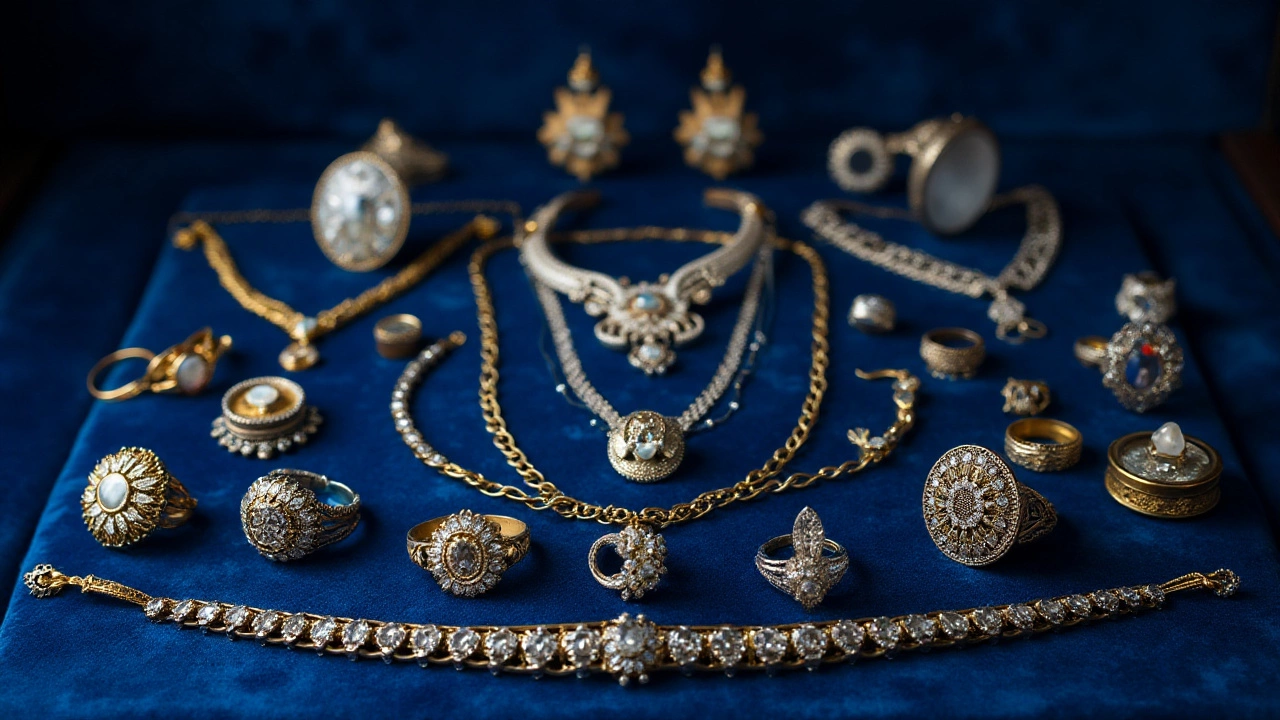Jewelry Colors: A Simple Guide to Hues, Trends, and Traditions
When talking about Jewelry Colors, the spectrum of shades you see on necklaces, rings, earrings, bangles and other accessories, ranging from the warm glow of gold to the cool sparkle of diamonds and the vivid tones of gemstones. Also known as color palette in jewelry, it influences style, budget, and cultural expression. Jewelry Colors encompasses Gold Color, the classic yellow, rose or white hues that come from different gold alloys and purity levels, Diamond Color, the grading scale from D (colorless) to Z (light tint) that determines brilliance and price, and Gemstone Color, the natural or treated shades of stones like emerald, ruby, sapphire and many others that add personality to a piece. Each of these sub‑entities plays a role in how a piece is perceived, how it matches an outfit, and even how it fits into regional customs.
Why Color Matters in Indian Jewelry
India’s jewelry scene is a kaleidoscope of traditions. In many South Asian weddings, the mangalsutra’s hue—often a bright saffron‑tinged gold—carries a symbolic promise of prosperity. Meanwhile, the choora’s red bangles, the bridal saree’s gold embroidery, and the groom’s silver Kada all rely on color to convey status and emotion. Knowing the difference between 22K yellow gold and 24K rose gold can save you from over‑paying while still getting that coveted look. Diamond lovers often chase a “D‑color” stone because it pairs well with traditional gold, but a near‑colorless G or H can look just as stunning when set against a deep‑blue sapphire or a vivid emerald. Those gemstone colors aren’t just eye‑catchers; they link to astrology, birth months, and even health beliefs, as seen in posts about emeralds and pearls.
Understanding jewelry colors also helps you navigate trends. In 2025, chunky chains in brushed copper and matte gold are gaining ground over polished yellow gold, while pastel‑tinted gemstones—think soft pink morganite or mint‑green aquamarine—are entering bridal collections. If you’re shopping for one‑gram gold pieces, the color of the alloy matters more than the weight; a rose‑gold finish can make a tiny pendant feel richer than a plain yellow‑gold counterpart. For everyday wear, diamond color grades matter less than cut quality, so a G‑color diamond set in a sleek white‑gold band may last longer in your drawer than a higher‑priced D‑color stone that shows wear faster. The same principle applies to gemstone color: a well‑cut ruby with a slightly darker hue can appear more vibrant than a flawless but poorly cut stone.
When you plan a purchase, ask yourself three quick questions: 1) What outfit or occasion am I pairing this with? 2) Does the color have cultural or personal significance for me? 3) How does the chosen hue affect maintenance and longevity? The answers guide you toward the right gold color—perhaps a 22K white gold for a modern look—or the right diamond color—maybe an I‑color stone if you value size over sparkle. You’ll also discover which gemstone shade fits your daily lifestyle; emeralds need extra care, while durable sapphires can survive everyday wear.
All the pieces in this collection below touch on these ideas in different ways. Some dive deep into cost comparisons between gold markets, others break down diamond grading, and a few explore the symbolism behind traditional Indian jewelry colors. By the end, you’ll have a clearer picture of how color not only defines beauty but also shapes value, tradition, and personal expression. Ready to see how these concepts play out in real‑world scenarios? Keep scrolling to explore the articles that unpack each angle in detail.
